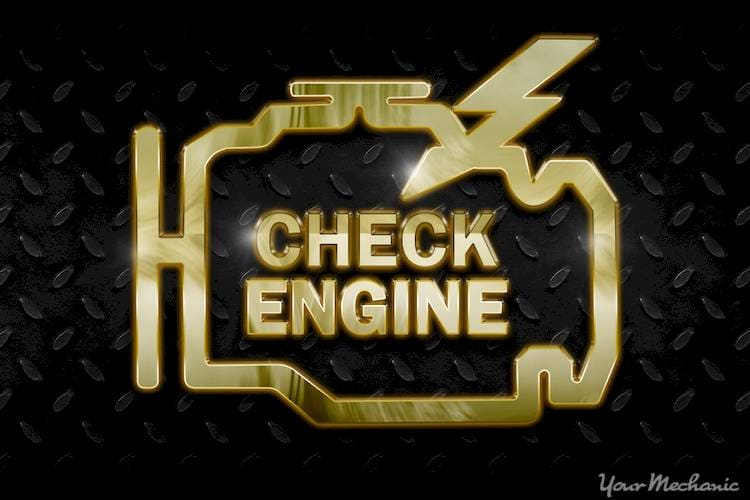What the P0774 code means
A P0774 code is an indication that the powertrain control module (PCM) has registered an abnormality in shift solenoid E.
What causes a P0774 code?
- Low level of automatic transmission fluid (ATF)
- Failed shift solenoid
- Blocked internal passages inside transmission’s hydraulic circuits
- Dirty/contaminated ATF
- Low internal ATF pressures
- Internal mechanical failures
- Failed PCM
- Failed transmission control module
What are the symptoms of a P0774 code?
There may be no detectable symptoms at all, or symptoms can include:
Other shift solenoid-related codes may also go along with this code.
How does a mechanic diagnose a P0774 code?
Since the mid 1980s, virtually all automatic transmission-equipped vehicles have been designed with computer controls for the transmission. The OBD-II powertrain control module (PCM) relies on information from a network of sensors to determine fuel metering, engine timing, gear selection, shift points and other drivability factors. The PCM enacts shifts and gear selection via solenoids, acting on information such as vehicle speed, engine/turbine RPMs and transmission output speeds.
When a solenoid is sending voltage to the PCM that is outside of normal parameters, it will register a trouble code and illuminate the malfunction indicator lamp (MIL).
The PCM directs the solenoid to enact a shift, which it does by changing the path of fluid transfer between the hydraulic circuits of each set of gears. The automatic transmission is designed with a high pressure pump, driven by the torque converter, which keeps fluid circulating through the hydraulic circuits in the transmission and valve body. Low internal pressure can be enough to prevent gear changes and register a code. Often, poor fluid pressure is caused by a low level of ATF, or dirty/contaminated ATF.
A scanner/code reader and digital volt/ohmmeter will be needed for this diagnosis and repair.
Begin your diagnosis with an inspection of the transmission fluid dipstick. Make sure that the fluid is at the proper level and in good condition. If the level of ATF is low, add manufacturer’s recommended ATF and determine where the leak is located. Clean the transmission’s underside with brake cleaner and spray with aerosol foot powder to make it easier to trace a leak.
After filling the transmission, test drive the vehicle at normal operating temperature. Clear the diagnostic codes and see if the code returns. If not, the problem was likely caused by a low level of ATF.
Fluid that smells/appears burned is a sign of trouble. Burned fluid is an indicator that the transmission was operated at a low fluid level or was drastically overheated, and may have suffered catastrophic internal problems.
In case of burned fluid, drop the transmission pan and check for clutch material or other debris. If debris is found in the pan, a rebuild of soft/hard parts, fluid flush/replacement and a new torque converter will most likely be necessary before the transmission will operate properly. If no debris is found, move on to inspect the internal wiring and connectors.
Look for any shorted/burned wiring and replace as necessary. Most applications will require a full replacement of the internal transmission wiring if any problems are found.
If the transmission’s wiring harness appears to be in good condition but slippage/delayed engagement keeps occurring, check the transmission’s internal pressures. Using a hydraulic pressure diagram, locate the proper port on the transmission housing and connect a manual pressure gauge. Compare your findings to manufacturer’s specs.
Typical causes of low internal pressures can include blocked hydraulic passages, faulty shift solenoids, faulty electronic pressure regulator or a defective pump. Pump replacement will require dropping and partially disassembling the transmission.
If the transmission seems to operate normally after these steps but the code returns, check the shift solenoid in question for reference voltage and ground signals.
If reference voltage or ground circuits are open, use the digital volt/ohmmeter to check for continuity and resistance in all circuits. Remember to disconnect any related control modules to prevent damage.
Repair/replace any system circuits/connectors as needed. Retest the system.
Using the factory wiring diagram, test the shift solenoid in question and any related circuits for continuity/resistance and compare your findings with factory specs.
Repair/replace any circuits, components or connectors that do not comply with factory specs. Retest the system.
If all circuits are intact and test good, connect the scanner through the diagnostic port and attempt to manually engage the shift solenoid in question. If the solenoid functions properly and all circuits are in compliance with factory specs, suspect a failed PCM but remember that PCM failure is rare.
If the shift solenoid fails to engage manually, replace the solenoid or solenoid pack. Retest the transmission control system.
Common mistakes while diagnosing P0774 code
Technicians report that often shift solenoid circuit problems cause this code, but the solenoid itself is diagnosed and replaced in error.
How serious is a P0774 code?
A P0699 code results in delayed engagement, harsh shifts, failure to shift or transmission slippage. It should be repaired right away.
What repairs can fix a P0774 code?
Transmission problems, especially in today’s vehicles, shouldn’t be put off. Proper transmission maintenance, however, can help avoid problems like a P0774 code. That includes avoiding transmission overheating from things like towing or hauling heavy loads, and regular flushes/fills to remove contaminants.
Need help with a P0774 code?
YourMechanic offers certified mobile mechanics who will come to your home or office to diagnose and repair your vehicle. Get a quote and book an appointment online or speak to a service advisor at 1-800-701-6230.
Check Engine Light
trouble codes
P0774





